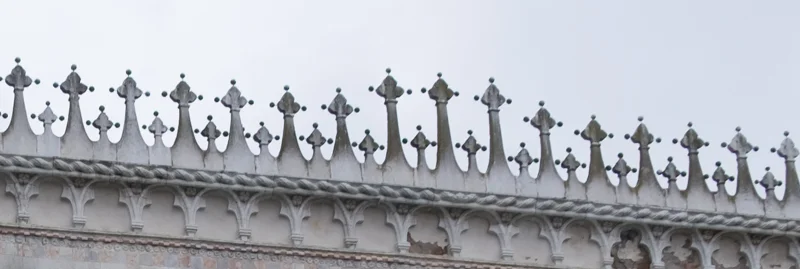What's the best lens for travel photography?
With any question like this, the answer is always, “It depends.”
It depends on how much you want to carry, what your budget is, if you want to shoot landscapes as well as portraits, and whether you need a fixed maximum aperture for the length of your zoom (more on this below). In this post, I want to make the case for travelling with just a single lens, a superzoom.
What is a superzoom?
Fuji X-T1 with 18-135mm superzoom lens
The focal length of a lens determines how much you can “fit in” to the image. A wide angle lens (with a shorter focal length, eg. 20mm) takes a very wide view, and is used by landscape photographers to get those sweeping vistas.
A telephoto lens (with a longer focal length, eg. 200mm) has a very small angle of view, and singles out a small part of the scene to capture on the final image.
Wider angle shot of Venice including the Rialto Bridge (20mm)
Telephoto shot of the Rialto Bridge (130mm) - taken from the same place, but isolating a smaller part of the frame
A fixed focal length lens, or “prime” lens, has just one focal length - eg. a 50mm.
A zoom lens allows the photographer to switch between focal lengths, eg. a 70-210mm allows you to select any focal length from 70mm to 210mm. Zoom lenses are more expensive to manufacture because they have more lens elements, and more moving parts.
A superzoom lens is just a zoom lens that has an unusually large range of focal lengths, from a wide angle all the way up to a telephoto. Unless you get an incredibly expensive one, the quality of images will not be as good as those from shorter range zooms, or prime lenses. (Because the extra lens elements introduce light diffraction, resulting in softer images and possible colour fringing.)
I used to take at least 2 lenses on every trip, plus a tripod: a super-wide angle zoom (11-24mm) and a telephoto zoom (70-210mm). These lenses weigh 1.1kg and 1.4kg respectively, making a combined weight of 2.5kg.
Compare that set-up with my new lightweight, footloose and fancy-free 18-135mm lens: less than 0.5kg for the whole lens.
If you can get over the disadvantages of a superzoom lens (below), I would thoroughly recommend trying one for the weight benefit. I find I can shoot longer days, walk further, sit more comfortably on public transport, pop into a cafe more easily and generally have more fun with just one camera and one lens, than with an unwieldy camera bag.
Advantages of a superzoom lens
Weight. They are small and light. You will love it.
Disadvantages of a superzoom lens
>> Limited range of maximum apertures
The cost of having a fixed maximum aperture throughout the range increases as the length of the zoom goes up, so superzooms tend to have a variable maximum aperture throughout the range.
My Fuji 18-135mm has a maximum aperture of f3.5 at 18mm, reducing to f5.6 at 135mm.
If having a large maximum aperture throughout the range of focal lengths is critical for you, you won’t enjoy using a superzoom. But before you discount the option, think about how often you actually need a wide aperture at the longer focal length, especially when travelling. I have just got back from a long weekend in Venice, and didn’t need once need anything wider than f5.6 at the long end.
>> Sharpness
The edges can be just a touch softer than you will be used to if you shoot prime lenses, or more expensive, shorter-range zooms.
Detail at 100% magnification, from the wider shot below
Conclusion
What do you want to do with your photos? For family, photo albums, Instagram and blogging, this lens will be fine. Save your poor back from having to carry those heavy primes. Enjoy the freedom that comes knowing you can’t change lenses because you’ve only got one with you.
But if you want to take epic landscape shots (needing a tripod and sharper lens), or you want to win competitions (probably needing a sharper lens), you want to shoot in low light (needing a tripod), or you are driving and so luggage isn’t an issue - take your full kit bag and don’t risk the lower quality shots.
Join A Year With My Camera here
Do you want to get a solid understanding of focal lengths, apertures and shutter speeds before your next trip? Want to be confident which setting to pick? Don’t want to hold up the rest of your group while you tweak your camera? Join my free, online, introductory photography course now, and you’ll be all set next time you pack up your camera to travel:






